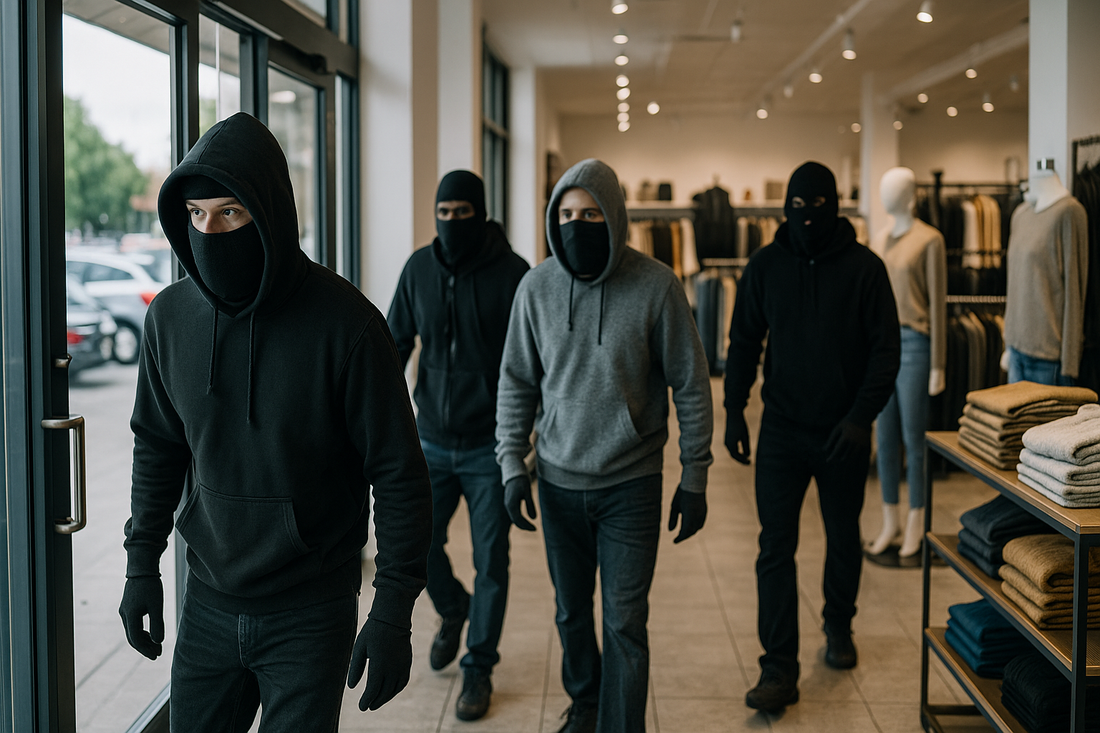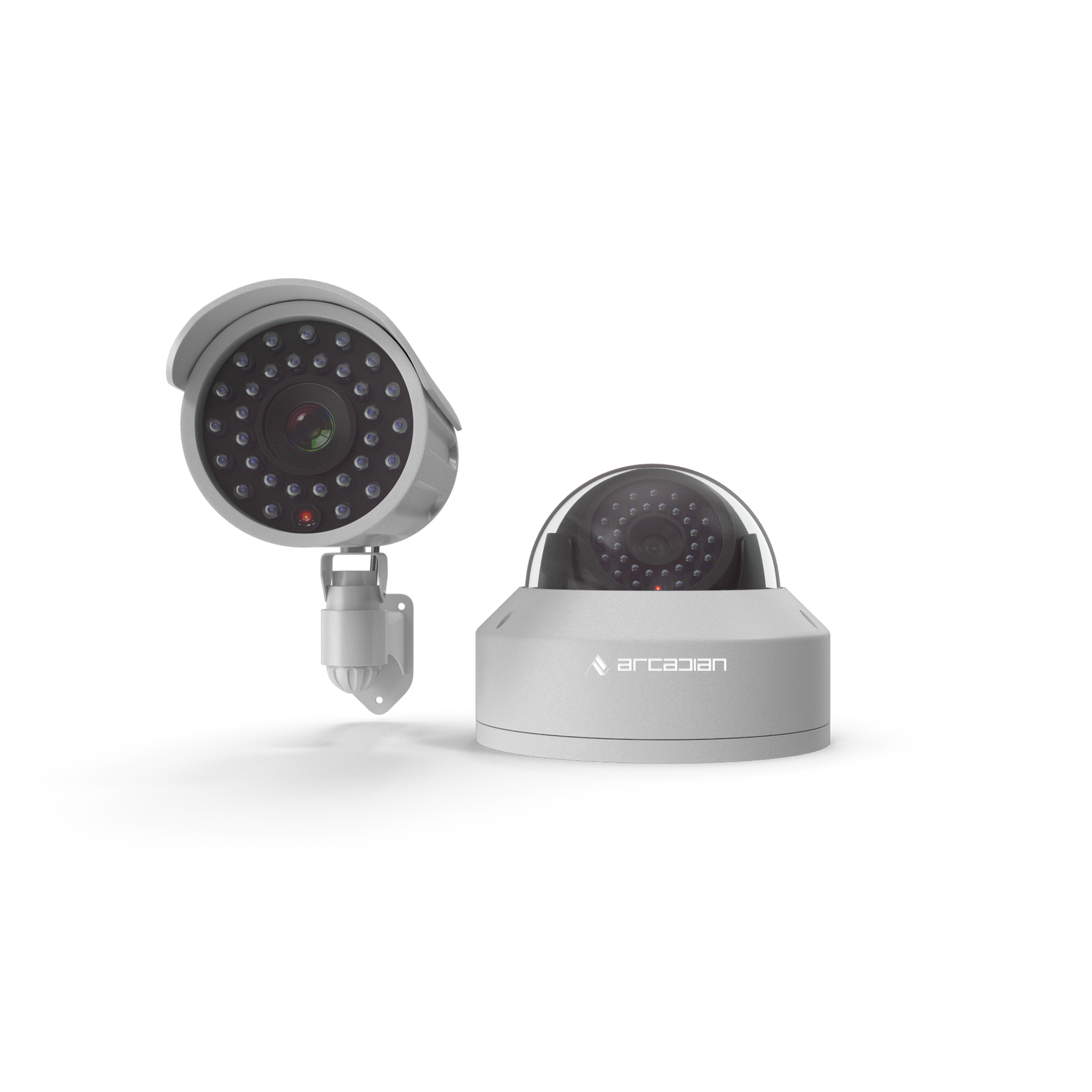The Retail Crime Crisis in the U.S. and Canada (2025): Why Adaptive AI Security Is No Longer Optional
Retail crime in the U.S. and Canada is hitting historic levels, with organized theft, violence, and cross-border gangs reshaping loss prevention. Here’s why adaptive AI, not static systems, is the only way forward.

Introduction
In 2025, retailers in the United States and Canada are facing what the National Retail Federation (NRF) calls an unprecedented crisis in theft, fraud, and violence. Organized retail crime (ORC) alone costs U.S. retailers an estimated $94.5 billion annually, while Canadian retailers report losses exceeding $5 billion CAD per year, according to the Retail Council of Canada (RCC).
Legacy surveillance systems — from outdated DVR/NVR setups to rigid VMS and even newer “cloud” competitors like Verkada, Eagle Eye Networks, Genetec, and Milestone — continue to promise prevention while criminals adapt faster. But the truth is stark: criminals are evolving, while legacy security is static.
ArcadianAI was built to close this gap. With our AI assistant Ranger, businesses in retail, cannabis, automotive, and franchises get a cloud-native, camera-agnostic security platform that doesn’t just record crime — it actively detects, analyzes, and prevents it in real time.
This blog explores the most pressing crime topics in U.S. and Canadian retail, why the traditional approach has failed, and how adaptive AI is reshaping the future of loss prevention.
Quick Summary / Key Takeaways
-
Organized retail crime (ORC) is escalating across North America.
-
Shoplifting and violence against retail staff are rising sharply.
-
Cross-border gangs exploit gaps between U.S. and Canadian enforcement.
-
Legacy NVR/VMS systems fail against dynamic, organized threats.
-
ArcadianAI’s Ranger delivers real-time, adaptive AI protection.
Background & Relevance
Why this matters now:
-
ORC gangs dominate losses: A small group of repeat offenders are responsible for 68% of theft value in retail, with average incidents nearly $900 per event (Auror Retail Crime Report, 2024).
-
Violence is rising: In 2023, the U.S. saw a 27% increase in violent incidents tied to retail theft, while Canadian retailers reported a 40% increase in threats or assaults on staff (RCC, 2024).
-
Retail security spending is surging: Loss prevention budgets in North America are expected to surpass $20 billion in 2025, yet much of this is still wasted on legacy guards and underperforming VMS/NVR solutions (Statista, 2025).
This is no longer about preventing small shrinkage — retail crime has become a supply-chain threat, a public safety issue, and a strategic risk.
Core Topic Exploration
1. What Is Organized Retail Crime (ORC) and Why Is It So Dangerous?
Organized Retail Crime is not shoplifting — it’s a coordinated network of gangs stealing high-value goods for resale.
-
Scale: ORC costs U.S. retailers $94.5B/year; Canadian retailers lose $5B CAD annually.
-
Tactics: Smash-and-grab attacks, “booster” crews, fraudulent returns, gift card schemes, and cross-border trafficking.
-
Cross-border reality: Canadian gangs resell in U.S. secondary markets and vice versa. CBSA has seized millions in stolen goods moving across Ontario–Michigan and BC–Washington corridors.
Legacy cameras may catch footage of the theft. But by the time managers review NVR footage, the goods are gone, fences are paid, and resales are happening online.
ArcadianAI Ranger, by contrast, detects coordinated entry, abnormal loitering, vehicle license plates, and group behavior in real time, alerting operators before the grab is executed.
2. Shoplifting vs. Violence: The New Face of Retail Crime
Shoplifting used to mean low-dollar theft. Now, it’s increasingly violent.
-
U.S. data: Shoplifting incidents grew 93% from 2019–2023 (NRF, 2024).
-
Canada: In Toronto, police reported a 45% rise in violent shoplifting in 2023.
-
Impact on staff: Over half of Canadian retail workers report physical abuse monthly; U.S. frontline associates face daily threats.
Retailers like Walmart, Target, and Canadian Tire are experimenting with receipt checks, off-duty police, and AI detection — but inconsistent systems (Verkada in one store, Eagle Eye in another, guards in a third) create blind spots criminals exploit.
ArcadianAI’s approach: unify all camera types, all locations, all behaviors into a single cloud AI engine. Ranger sees patterns that a human or static alert system would miss.
3. Theft-to-Resale Networks in North America
This isn’t random theft. It’s a shadow economy.
-
Stolen goods in the U.S. often flow into flea markets, online marketplaces (Facebook Marketplace, OfferUp, eBay).
-
In Canada, organized crews target meat, alcohol, and health & beauty products, reselling them to restaurants and convenience stores.
-
Joint RCMP–FBI operations in 2024 uncovered a $20M CAD cross-border theft ring moving goods between Alberta and Montana.
Legacy video can’t track stolen goods. ArcadianAI Ranger integrates with license plate recognition (LPR), POS data, and cross-location analytics to flag suspicious activity before goods enter resale pipelines.
4. Internal Theft & Fraud
Employee theft often exceeds external shrink.
-
Sweethearting (scanning items at $0), POS overrides, fraudulent returns.
-
According to RCC (2024), 36% of shrink in Canada is employee-driven; in the U.S., NRF reports 33%.
-
Internal theft is more systematic, harder to catch, and often colludes with ORC.
ArcadianAI Ranger’s anomaly detection on POS + video feeds identifies:
-
Repeat overrides by one cashier.
-
Cash register open times vs. sales mismatch.
-
Suspicious bagging activity (e.g., hand movements inconsistent with scanned items).
No static VMS or guard can do that in real time.
5. Collaboration & Legislative Shifts
Retailers can’t fight this alone.
-
U.S.: The Combating Organized Retail Crime Act proposes a federal Homeland Security task force.
-
Canada: The RCC is lobbying Ottawa for ORC-specific penalties and intelligence-sharing between police and retailers.
-
State/Provincial action:
-
New York saw a 12% drop in shoplifting in 2025 after stricter penalties.
-
Alberta launched a Retail Crime Unit with RCMP to target booster crews.
-
ArcadianAI aligns with these efforts by feeding real-time, AI-verified alerts directly into law enforcement platforms like Immix, making collaboration frictionless.
6. Why Legacy Security Fails
Competitors still rely on outdated assumptions:
-
Verkada: Proprietary cameras, limited ecosystem, weak in multi-location deployments.
-
Genetec: Powerful VMS, but on-prem costs and complexity limit agility.
-
Eagle Eye Networks: Cloud VMS, but lacks advanced adaptive analytics.
-
Milestone: Integrator-friendly, but reliant on third-party AI add-ons.
-
Rhombus, Ring, Nest: Small business–focused, not enterprise-grade.
Static NVRs and siloed systems mean each store is an island. Criminals exploit that by hitting multiple locations with the same MO.
ArcadianAI was designed differently:
-
Cloud-native, camera-agnostic → Works with Axis, Hanwha, Hikvision, Lorex, and more.
-
Adaptive AI → Learns behaviors per store, per season, per hour.
-
Enterprise-wide dashboard → A franchise owner with 300 stores sees it all in one pane.
Comparisons & Use Cases
Table: ArcadianAI vs. Legacy Competitors
| Feature | ArcadianAI Ranger | Verkada | Genetec | Eagle Eye | Milestone |
|---|---|---|---|---|---|
| Camera Agnostic | ✅ Yes | ❌ No | ⚠️ Partial | ⚠️ Partial | ⚠️ Partial |
| Real-Time AI Alerts | ✅ Adaptive | ❌ Basic motion | ⚠️ Add-on | ⚠️ Limited | ⚠️ Limited |
| Multi-Location Dashboard | ✅ Unified | ❌ Location silo | ⚠️ Complex | ⚠️ Limited | ⚠️ Integrator setup |
| False Alarm Reduction | ✅ Built-in | ❌ Weak | ⚠️ Rules only | ❌ Weak | ⚠️ Rules only |
| Cross-Border Insights | ✅ Yes | ❌ No | ❌ No | ❌ No | ❌ No |
| ROI Impact | 50–70% OPEX reduction | Low | Medium | Medium | Medium |
Common Questions (FAQ)
Q1: What is the biggest retail crime threat in 2025?
Organized Retail Crime (ORC), costing U.S. retailers $94.5B and Canadian retailers $5B annually.
Q2: Why are retail crimes more violent now?
Repeat offenders and gangs are increasingly armed, creating safety risks for staff and customers.
Q3: How do ORC gangs resell stolen goods?
Through online marketplaces, grey-market shops, and cross-border trafficking.
Q4: Can AI actually prevent theft?
Yes — adaptive AI like ArcadianAI Ranger detects suspicious behavior before theft occurs, unlike static systems.
Q5: Why not just hire more guards?
Guards cost more (up to $75K/year per store) and can’t monitor every angle 24/7. AI scales instantly.
Conclusion & CTA
Retail crime in the U.S. and Canada is no longer just a shrinkage problem — it’s a national security and profitability crisis. From ORC gangs to violent shoplifting and insider fraud, legacy systems have failed to protect retailers.
ArcadianAI offers the only adaptive, cloud-native AI guard that sees across all locations, detects crime before it happens, and integrates seamlessly with law enforcement.
👉 See ArcadianAI in Action → Get Demo – ArcadianAI
Security Glossary (2025 Edition)
-
AI Alerts — Automated notifications generated by AI when specific retail anomalies are detected.
-
Booster Crew — An organized retail crime group specializing in high-volume theft for resale.
-
Cross-Border Crime — Theft and trafficking of stolen goods across the U.S.–Canada border.
-
False Alarm Reduction — AI process that filters out non-threat events like shadows or weather.
-
Genetec — Canadian VMS vendor offering enterprise security software.
-
LPR (License Plate Recognition) — AI technology that identifies vehicles linked to theft or repeat offenders.
-
Milestone Systems — Danish VMS provider used widely in North America.
-
NVR (Network Video Recorder) — On-prem system storing video footage, often vulnerable and outdated.
-
ORC (Organized Retail Crime) — Coordinated theft rings targeting retailers for large-scale financial gain.
-
POS Fraud — Internal theft via point-of-sale manipulation such as overrides or sweethearting.
-
Ranger (ArcadianAI) — AI assistant acting as an adaptive “AI guard” across cameras and locations.
-
Resale Network — Grey-market system reselling stolen goods via shops, restaurants, or online.
-
Retail Shrink — Inventory loss due to theft, error, or fraud.
-
RCC (Retail Council of Canada) — Trade association representing Canadian retailers.
-
Shoplifting — Theft of goods from a retail store, often now violent in nature.
-
Static VMS — Video management systems with rigid rules, unable to adapt to new threats.
-
Verkada — U.S. competitor offering proprietary cloud-camera systems.
-
VSaaS (Video Surveillance as a Service) — Cloud-based surveillance, storage, and analytics model.

Security is like insurance—until you need it, you don’t think about it.
But when something goes wrong? Break-ins, theft, liability claims—suddenly, it’s all you think about.
ArcadianAI upgrades your security to the AI era—no new hardware, no sky-high costs, just smart protection that works.
→ Stop security incidents before they happen
→ Cut security costs without cutting corners
→ Run your business without the worry
Because the best security isn’t reactive—it’s proactive.







